
This is a guest post by Stephen Roe. Stephen no longer falls asleep on the couch, but he still loves helping analytical people reach personal goals.
You’re frustrated.
Your most difficult tasks never get done.
No matter how hard you work, they linger on your to-do list, suffocating you with guilt and stress.
It isn’t fair. You work as hard as (or harder than) everyone else.
You know what projects are most important.
But when it comes time for a tough task, it’s a desperate struggle to get started—much less finish.
And you wonder… is there something you’re missing?
Some mistake that’s crippling your productivity?
Well, yes. There is.
It’s called decision fatigue, and chances are, you’re not doing enough to stop it.
How decision fatigue destroyed my productivity every day
For me, decision fatigue isn’t a distant threat. It’s a personal struggle I’ve worked to combat.
For about two years, decision fatigue conquered my life. After long days at my job, I’d come home to personal work—washing dishes, taking out the trash, and reviewing mail.
But I could never get it done.
I’d spend the evening dreading and procrastinating. I’d force myself to stay awake, even though I didn’t have the energy to accomplish anything.
I’d fall asleep on the couch, only to wake up late the next morning and scramble to work. After wearing myself out for another day, I’d return home and repeat the cycle.
It took me years to understand and solve the culprit of my frustrations: decision fatigue.
The productivity killer we face 35,000 times each day
It’s impossible to say exactly how many decisions we must make each day, but by one estimate, that number is 35,000. You’re making decisions all the time—whether to salt your dinner, what to listen to on the radio, or whether to walk around the coffee table on the right or left.
And each decision is killing your productivity.
Decisions—even ones that seem harmless—wear down our willpower and leave us tired and unmotivated.
In many ways, your brain is like a courtroom.
Every decision requires time and energy. If you aren’t careful, you can backlog the judge and jury with frivolous cases—when to eat, what to wear, and what to do.
When you wear out the “court” in this way, your brain won’t have the energy to work on a challenging task, and you’ll just check your email instead.
Today, my life is more organized, and I get more done. I no longer fall asleep without warning on the floor of my living room, and I have more energy throughout the day.
I’m far from perfect, and I can’t attribute everything to one change. But I noticed a considerable difference when I worked to reduce decision fatigue. It boosted my energy, made me more productive, and allowed me to get more done.
In learning how to avoid decision fatigue, I found three strategies work the best:
- Make fewer decisions. It’s simple, but too many of us never make an effort to eliminate decisions.
- Have a process for making decisions. Develop systems for the inevitable, so that you can respond with minimal effort.
- Develop powerful routines. Eliminate the choice inherent in the most important parts of your day.
This article contains three sections, one for each strategy. Implement one or more of the ideas, and you’ll see your productivity skyrocket.
Component #1: Make fewer decisions
The fastest way to guard yourself against decision fatigue is to make fewer decisions. But this is easier said than done, so these techniques will provide some guidance.
1. Stop eating whatever and whenever you want
Research has shown that on average, we make 221 decisions per day about food. A simple meal plan can conserve an incredible amount of mental power.
Meal plans aren’t just for bodybuilders and that health-obsessed relative who brings Tupperware containers of food to each family reunion. Top performers in a variety of fields plan their meals ahead so that when the time comes, they can blast through work.
To start, write down what you eat for about a week. Get a feel for how much you eat, what foods you prefer, and when you get hungry.
Using that blueprint, create a plan you can start with, then adjust over the course of a few weeks as you see fit.

A few pointers:
- Build variety into your plan. For example, I eat a certain quantity of vegetables at the same time each day, but I keep a few different types from which to choose.
- Prepare your meals ahead of time. The easier it is to get a meal ready, the more likely you are to eat it when the time comes. Make everything in advance, even simple meals like sandwiches.
- Graze if you can. Research indicates that willpower and self-control need glucose to work (more on this later), so spread meals out over the course of the day if possible.
- It doesn’t have to be homemade. A friend of mine created a weekly schedule of fast food restaurants and didn’t have to think about where to go each day.
2. Fix the productivity drainer you’re wearing right now
Legendary performers—like Steve Jobs and Mark Zuckerberg—are famous for wearing the same outfit every day. That outfit creates a ritual of success, but also reduces their decision load.
To quote Barack Obama on why he only wears gray and blue suits:
“I’m trying to pare down decisions. I don’t want to make decisions about what I’m eating or wearing. Because I have too many other decisions to make.”
How you reduce clothing choices is up to you. Courtney Carver’s Project 333, where you wear only 33 articles of clothing for three months, is my inspiration. I follow a system like this and rotate another dozen or so seasonal items in with those 30-odd pieces of clothing.
For example, here’s my entire summer wardrobe:

If this seems drastic, don’t worry. You can reduce clothing decisions without getting rid of a thing. Follow these three steps and you’ll be ahead of most people:
- Hide unused pieces. Move anything you wear infrequently or seasonally to the back of your closet. If you keep a thick raincoat at the front, you’ll have to decide not to wear it each time, even if you only need it once a month.
- Divide your clothes into categories. If all your shirts or blouses are in one place, you can find them quickly without other items distracting you.
- Prepare in advance. Every night, check the weather forecast for the next day. Select an appropriate outfit and move it out of the closet. The next morning, there are no decisions to make. (Later, I’ll talk about other unexpected ways to plan the night before.)
3. Beat the popular pastime that drains your energy
Shopping can be the most willpower-draining experience we face in a week.
Researchers at Columbia University posed as employees at a grocery store and offered passerby samples of jams. When the researchers used six flavors, 30% of tasters purchased a jar. But when researchers increased to 24 varieties, only 3% bought. The decision was too overwhelming.
Every time you go shopping, decisions flood your brain. Use these tips to make the best of it:
- Use a checklist for staples. This list should contain everything you need on a regular basis, including specific details like package size. A few minutes before going to the store, check off what you already have.
- Keep a running list of everything else. To prevent the pre-shopping scramble, write down things as you need them. This list should include infrequent staples such as toothpaste or lightbulbs as well as one-time purchases like birthday gifts (more tips on gifts later). Add these to the list as soon as you notice they’re running low, and don’t worry about them again until you’re at the store.
- Pick a brand and stick with it. Say what you like about brand loyalty, but the simple truth is that choosing a brand will save you tremendous cognitive ability. Decide on your favorite brand (it can be the generic one) and don’t even look at the others when you go shopping.

- Organize your list based on the store’s floor plan. The order of my list indicates my path through the store—fresh fruit is near the front, frozen vegetables are at the back, and oatmeal is somewhere in the middle. Because of this, I can finish a week of shopping in under ten minutes.
- Make fewer shopping trips. I know people who drop by the store after work almost every day to pick up one or two items. Why?! Make a list, buy everything in one trip, and limit yourself to one exhausting excursion per week.
- Minimize online shopping, too. Nothing destroys my productivity faster than a morning spent choosing from a list of 13,538 products matching my search criterion on Amazon.
4. With decision-draining friends, who needs enemies?
If you spend time with indecisive friends, it can quickly deplete your decision-making power. Surround yourself with people who make decisions themselves and don’t always put the responsibility back on you.
If you can’t avoid these people, change these people. As a recovering un-decider, these methods worked wonders for me:
- Take turns. People like me feel less guilty presenting a choice if we know you are sharing the burden. If you need to make decisions with this person frequently, offer to switch back and forth for each decision.
- Ask for two choices. Sometimes, un-deciders are afraid to stake their reputations on one outcome. Instead, ask for their two top choices, then pick one for them.
- Compliment them. If someone appreciates my choice, I’m more likely to decide next time. You can compliment us even if you don’t like what we choose—just find something unique about the decision.
5. Stop letting your computer blindside you
Distractions are bad, but even worse are society’s misconceptions about them.
Someone who splits their attention across a dozen tasks? Society praises her multitasking.
Someone who concentrates in an intrusive environment? Society praises his focus.
But someone who eliminates all distractions? Society shuns her as a boring, work-obsessed, antisocial loser. But that’s okay because her productivity will speak for itself.
The problem is that every distraction, even if we “ignore” it, is another decision we must make. Shun the fad of modern distraction-laden workplaces, and keep your decision-making power active for the whole day.
Here’s a list of three common computer distractions you might not have noticed. You can fix all them in a few minutes.
- Change your new tab. Every time you open a new tab on your browser, website thumbnails, bookmarks, or (heaven forbid) advertisements present you with choices. Reduce your new tab to a beautiful, empty, blank page. Here’s how to do it in every browser.
- Simplify your desktop. If you’ve cluttered your desktop with files and links to applications, you’ll have to choose not to use any of them each time you boot your computer. To start, move all the documents on into a “desktop docs” folder. Later, schedule a time to move everything to its rightful place off the desktop.
- Hide apps you never use. If you’re overwhelmed with a massive list whenever you go to start an app, tone down the decisions. Try creating a folder or screen for apps you use regularly and one for less-frequent programs.

Strategy #2: Have a process for making decisions
Eliminating decisions is the quickest method to reduce the number you face, but it doesn’t solve everything. To reduce stress, create processes for unexpected decisions.
These strategies will provide some practical ways to reduce the mental requirements of each decision.
1. Use binary to ace your decisions
One of the most exhausting parts of making a decision is paring down to the few best choices. In his book Smarter Faster Better, Charles Duhigg explains the technique of binary decision-making. By this process, you break every choice down into two options.
Since there will always be spur-of-the-moment decisions, this is a useful framework to solve them quickly and with little stress.
Here’s a step-by-step process using a simple decision: what should we have for dinner?
Most people would face this as a series of questions encompassing all their options—do we want Chinese takeout, pizza, or subs? Do we want to eat at a sit-down Mexican, Italian, or American restaurant? Do we want to make sandwiches, eat leftovers, or cook pasta? Do we want to buy supplies for that recipe we’ve wanted to try for a long time?
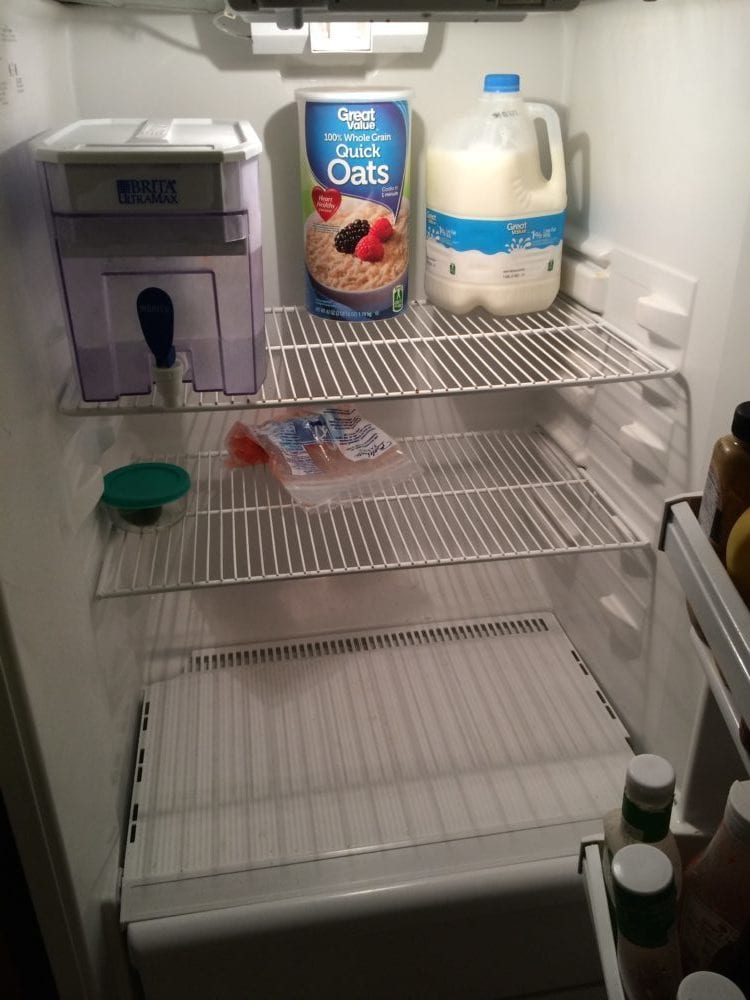
This tangle of options is exhausting. Instead, break it down into this set of binary decisions.
- Cook here or eat out? Eat out. That means we have two choices:
- Take out or sit down? Sit down. That leaves us with two prices:
- Expensive or midrange? Midrange. Two of our favorite restaurants fit that criterion:
- Mexican or Italian? Mexican.
One of the beauties of the binary process is that it is useful for both complex and straightforward decisions. Either way, the process reduces the mental strain such a decision requires.
2. Steal the system of the U.S. Air Force
Every decision we make wears us down, but many of them don’t have to. I don’t have an exact number, but I would estimate at least 10% of the decisions we make each day are the same ones, over and over.
According to Atul Gawande in his book The Checklist Manifesto, the U.S. Air Force provides its pilots an extensive document of checklists. They remind pilots which steps to choose in complex circumstances—and they save lives.
But it’s not just a technique for the military. Marketing expert Derek Halpern explains email used to overwhelm him. He solved the problem by creating generic responses to the most common emails. He no longer had to decide how to respond.
We’re going to do the same thing, just with everything. One of the most potent findings of the research I quoted earlier on food was that people woefully underestimated the number of decisions they make each day.
Over the course of about a week, start tracking the choices you’re faced with, plus what you decided with each one. I’d recommend creating a spreadsheet, and choosing a category.
For example, what questions do potential customers always ask?
What home projects always need improvement?
Which invitations do you regularly turn down?
At the end of the week, find which decisions come up frequently, then create a simple reference sheet from it.
Any time one of those decisions faces you, pull up the sheet. Over time, you’ll grow to memorize your decisions and refer to it less and less.
3. Learn from the mistakes of an Israeli parole board
In a recent study, Israeli judges gave out more favorable decisions for parole appeals at the beginning of the day. The chance of a favorable verdict steadily declined as the day—and their decision-making power—wore on.
It’s the same with you. Stop wasting time when you’re not as productive, and use the system the parole board (accidentally) discovered. Make the most of your day with a schedule.
Not all decisions are equal, and scheduling when you decide is your secret weapon to prevent decision fatigue. When preparing for the upcoming day, use these three pointers to work at peak efficiency:
- Schedule resistant work early. Willpower wears out with each decision, so use it wisely. Many people think hard and resistant are synonyms, then wonder why they aren’t productive. Solving a computer glitch might be hard and paying bills might be easy, but if you love computer work yet dread the unopened envelopes on your desk, schedule the bills first.
- Decide after eating. As I mentioned earlier, willpower relies on glucose to function well. Schedule critical meetings after a light lunch, or grab a snack 30 minutes before setting your weekly goals. Consider snacking every 1-2 hours while working.
- Schedule trivial tasks in the evening. Some activities—like choosing what clothes to wear—have diminishing returns. Even if you spend an hour deciding the “perfect” socks to wear, you’ll get most of the benefit from the first eight seconds. Schedule these tasks for later in the day, when you’ll be too tired to waste time finding the “perfect” answer.
4. Put a price on every decision
You know you should put a dollar value on your time. But do you do that when making decisions?
I recently realized I was exhausting my decision-making arsenal on pointless financial choices. I’d spend 10 minutes at the store deciding which brand of shampoo to buy, or a half hour debating whether to spend money going out that night with friends.
I’d compare each option, analyze the prices at stake, and finally come to a decision I was proud of. I didn’t realize my financial ruminating was costing me productivity.
Research from Princeton University has suggested that price comparisons during purchasing “depletes behavioral control.” That’s why you buy sugary snacks on long shopping trips.

The study suggests that the poor exert so much mental energy on price comparisons, they are more likely than the rich to eat while shopping, a sign of depleted willpower.
I wouldn’t consider myself rich, but I don’t need to worry about saving $0.38 on my shampoo, or deciding whether to split my entertainment budget over two nights or one.
Use these three steps to put a price on your decision-making:
- Set a (high) value. I want to avoid as much willpower depletion as possible. For me, every minute is worth $1, for a total hourly wage of $60.
- Decide how much money is at stake. When faced with a decision, figure out how much you could make. Using your time value, translate that to minutes, and only spend that much time on the decision (use a timer if you struggle with this). For example, if I’ll only save $1 on shampoo, I only get one minute on the soap aisle.
- Go with your gut. Make a quick decision, and rejoice in the productivity you’ve saved! If dinner with friends just means I’ll split my budget between two events, not spend more overall, I make that decision in a split second.
5. Make an investment that pays you back every day
We all have tasks that require a series of decisions every few days or weeks. If you’re never sure what movie to watch or clothes to wear, front-loading will help.
Instead of making all those decisions when they come up, plan out choices in advance. Even better, delegate that task to another person or company.
Here is a list of six possible long-term decisions that you could pare down or automate with front-loading.
- Meals. Create your meal plans a month in advance. At the most basic, just write down the meals you’re going to create. At a higher level, prepare grocery lists all at once.
- Media. Create a list of books to read, movies to watch, or music to listen to. There are a variety of tools for this, including an Amazon wish list, Netflix queue, or Spotify playlist. Use what works best for you.
- Exercise. Prepare a workout plan in advance. If you like to change up your workouts frequently, front-load the changes. Find a workout plan and schedule each exercise ahead of time.
- Gifts. Plan presents in advance. Instead of frantically guessing days before birthdays or holidays come around, spend a few hours and prepare gift ideas for the rest of the year. When the time comes to buy something, choose an item from your list.
- Dates. Schedule outings with your significant other early. Though it sounds unromantic, this has been a fun adventure for my girlfriend and me. Months ago, we found a list of date ideas. When we don’t know what to do, we’ll choose one from the list.
- Clothes. Put your wardrobe on autopilot. If you like keeping your attire up-to-date, but dislike the decision fatigue that comes with shopping trips, join a subscription service that does it for you. If you’re a guy, check out Five Four Club for clothes and Root Bizzle for socks and ties. If you’re a woman, look into Cypress and 5th for clothing and Wantable Accessories for, well, accessories.
Strategy #3: Replace decisions with routines
The single greatest strategy to improve your productivity from day to day is to turn your actions into predictable patterns. Every routine you create will simplify (or eliminate) one decision (or many).
I don’t live like a robot, and you shouldn’t either. Not every day is the same as the last. But when I change my schedule and routine, it’s because I want to—not because I lack the decision-making power.
1. Delegate your toughest decisions to your bed
You should never get into or out of bed without a routine.
A lot of people talk about having morning and evening routines, but the truth is that a routine only works if you stick with it, and sticking with it is the hardest part.
The beauty of starting your day with a morning and evening routine is that you prevent chance from capturing your most vulnerable times.
Your morning is vulnerable because your decision-making power is the strongest, and you must defend it.
Lots of people leave their evening up to chance. But since your power is weak, you’re vulnerable and will spend all night watching Netflix or reading dumb things online.
Asian Efficiency already has an impressive resource on creating a morning routine, but here’s a simplified five-step process to create a morning or evening routine you stick with:
- Create a trigger. Find what will trigger you to start. For most people, the alarm will trigger their morning routine, but yours may differ. The important thing is to have something that happens every day (including weekends). Mine is my alarm in the morning and getting home in the evenings.
- Create a reward. If there’s no benefit to following the routine, it won’t work. You can either add something immediately rewarding at the end of the routine (a cup of coffee, a late-night dessert) or shift an activity you already enjoy to the end of the routine (an energy-boosting workout, time to read a great book).
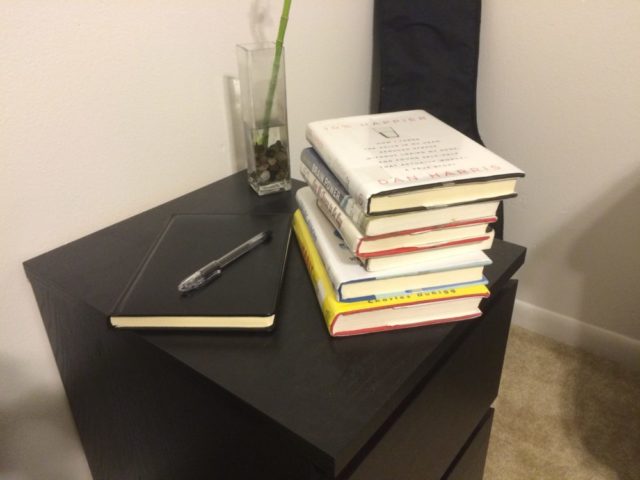
- Create distinct steps. Don’t just wing it tomorrow morning or tonight. Create a process and write it down. Know what you’re doing for each minute. And speaking of time, don’t make it too long—45 minutes is probably the upper limit.
- Destroy the barriers. Find all the reasons why you might stop your morning or evening routine, and work to eliminate each one. The fewer barriers in place, the fewer decisions you’ll have to make, and the easier everything will be.
- Practice it. Lie down in bed a few nights, set your alarm for a few minutes in the future, and pretend to do your morning routine. This afternoon, practice your evening routine (before it’s evening). Going through the steps will give you the experience you need to make it a reality when the moment strikes.
2. Stop stressing about exercise
Exercise should be a part of your day. Not only will it give you long-term benefits, a study of 683 workers shows that it also boosts your productivity in the short-term.
Unfortunately, working out can be a huge drain on your decision-making power. At a previous job, one of my coworkers exhausted herself with half-hearted plans to go to the gym.
She’d talk about going to the gym after work but spend the day dreading it and finding every possible excuse. The exertion she gave to that effort almost certainly played a role in how much she got done that day.
Instead of dreading a gym trip and making the decision of whether to work out each day, do what habit expert James Clear does and create a rule for gym attendance. In his words, “I’m not hoping that I’ll have enough willpower to make it to the gym. It’s just where I go on Mondays at 6pm.”
A few months ago, I did an experiment and tripled my gym consistency. Along the way, I discovered these strategies:
- Do less. Reduce your workout to the bare minimum. Don’t do a minute more exercise than you need to, as it will only make you dread the process. Cut it down to as few days as possible, and as little time as possible.
- Do it for a month. Set a rule you can follow for at least a month. If you aren’t positive you can do the routine for a full month, make the workouts smaller. Research shows that workers are more productive with just one workout per week.
- Be willing to ignore your schedule. If something comes up that disrupts your scheduled gym times, stay calm and adjust accordingly. Instead of skipping a workout, move it.
3. Become a sociopath, and spend more quality time with friends and family
This strategy may be the most controversial in this entire article, but I think it’s the most valuable.
I try to maintain a reasonable social life. Unfortunately, when I was available for every whim, decisions tormented me multiple times per week.
I would get a text at noon asking if I wanted to hang out that night, and I would spend time deciding. That decision required mental energy that I couldn’t exert towards my work tasks. I’d much rather enjoy time with friends without making decisions.
A slight tweak changed everything. I now have scheduled hours to spend with friends and family. It may sound cold and harsh—some would even call it sociopathic. But the fact is that I spend more time with them than before, and I enjoy that time guilt-free.
My previous schedule was a mess. I never knew when I was spending time with people, and often went with decisions on the fly.
To correct this, I made these two changes:
- Schedule the important people. I coordinated weekly or biweekly arrangements with friends. I set aside large time blocks in my week for people important to me.
- Ignore everything else. I didn’t attend an event unless it was already scheduled (with exceptions for family members in the hospital or other emergencies).
I have a vibrant social life and rarely get stressed about it. I know the time I have set aside, and rarely have to turn someone down. Instead, the response is: “No, but I’m free Sunday afternoon!”
4. Create a “big rock quarry” for each week
Back when I was falling asleep on the living room couch each night, I worked off a broad, all-encompassing to-do list.
This was terrible.
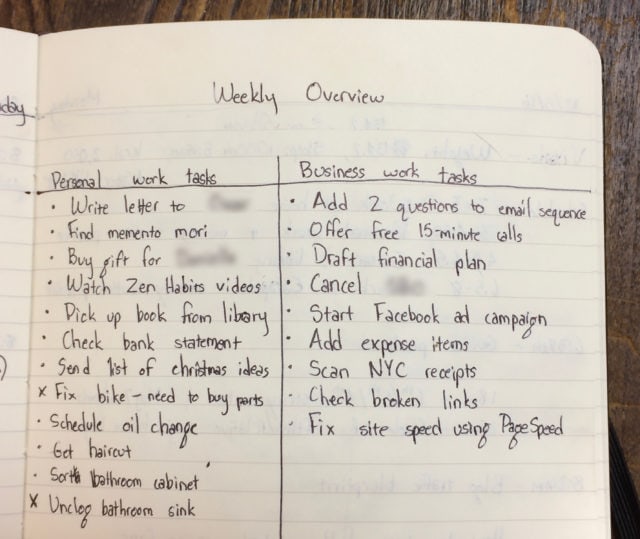
Each week required a new bout of decision-making. I didn’t know my ultimate goal, so every day I had to choose which activity was the most important.
I often felt like I was floundering, and would have to make decisions in the middle of the day and change what I was working on.
Every week, I crumbled. I couldn’t maintain the workload, so I shunned the to-do list and just chose tasks on the fly. The next week, I would build a new to-do list and repeat the cycle.
Don’t do this. Instead, create a weekly routine of planning out “big rocks”—the 1-3 most important tasks you must accomplish each day.
But don’t make the decisions arbitrary. Instead of picking big rocks on the fly at the beginning of the week (or even worse, that day), create a “big rock quarry.” Just like a mason can find a stone of any size in a quarry, your quarry is a list of tasks for any occasion.
There are a variety of ways to do this, and ultimately you need to create a system you will feel comfortable using.
These three steps are the most important to remove the decision-making process:
- Start focused. I have one yearly goal I work to achieve. It’s ambitious and challenging, but more important—it’s incredibly specific. When you start with the big goal first, you won’t have to decide which priority is most important.
- Find the next steps. Each month, I ask myself what the next steps are towards that goal, then break them down into a list. This gives me an extensive library of relevant tasks from which to choose.
- Choose your workload. Once I know what time I have in the week, I’ll add in big rocks day-by-day. Don’t fill your weekly plan with minutiae. The fewer tasks you schedule for each day, the fewer decisions you have to make.
- Set a time to review. Schedule a time, preferably at the end of the workweek, to review what you’ve accomplished and set goals for the next week. It doesn’t need to take more than 20 minutes, but it’s critical to prevent decisions throughout the week.
5. Create your Hustle Schedule
It may be a bold statement, but if you spend more than one minute to start work each day, I would say you aren’t clear enough on what you plan to achieve.
To get started quickly, I give myself a very specific schedule each day.
For years, I didn’t understand how time blocking could work. The system, it seemed, refused to coordinate with how I lived my day. I’d run 20 minutes over on a task, and it’d screw up the entire plan.
Instead, I’ve tweaked time blocking into my own time organization system. I call it my Hustle Schedule, but you can call it whatever you want.
I based it on a system of decision-banishing routines, and it’s worked wonders for me. Here are the strategies that make it run.
- Create patterns. Whenever possible, have an unchanging system for what you intend to accomplish. In my current schedule, I spend two hours every day reading content created by other experts on productivity and personal development (I call this “traffic grinding,” for reasons I’m not entirely sure of). Because that’s the daily routine, it’s one less big rock to accomplish and one less thing to think about.
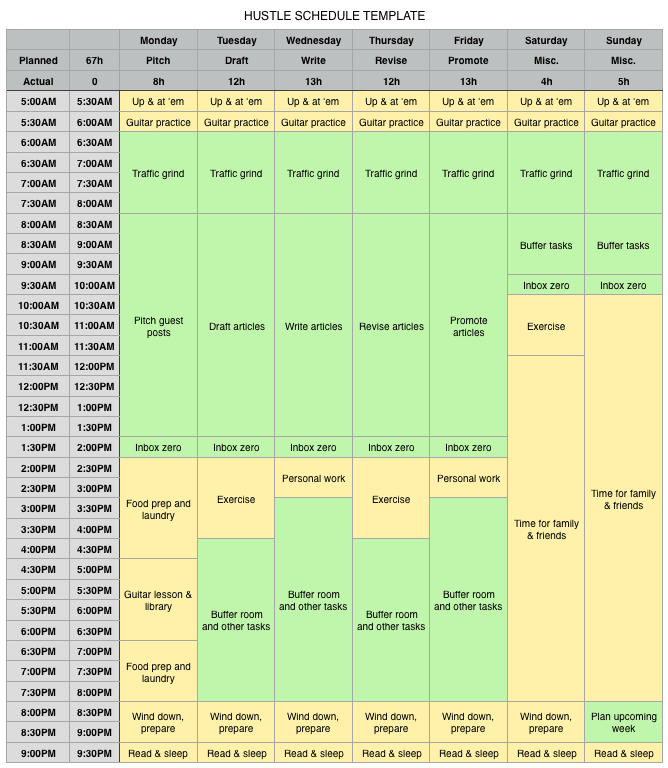
- Create buffer time. Extra space solved the problem of time blocking. I’ve included a sort of downtime in my schedule that allows me to finish projects that need finishing. This means fewer decisions about what to cut and where to spend my time. If I end up with extra time, there are no decisions involved. I automatically move through my task list.
- Create a running task list. Just like the running grocery list for supplies you’ll only need once or twice, this is a list of tasks I write down when I think of them. I keep the list in a Moleskine notebook, in an adapted version of the Bullet Journal. I get straight to the task that best fits the situation. I don’t have to decide where to start—it’s already on the list.
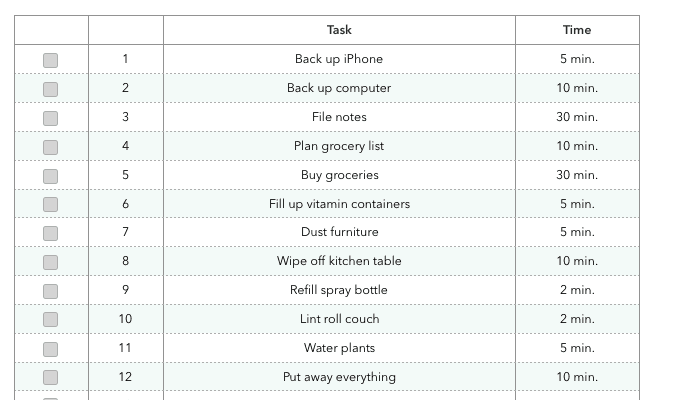
The system gives me an incredible benefit: I know precisely what I’m doing every minute of the day. Because I’ve built personal work, exercise, free time and leisure activities into my schedule, I enjoy them guilt-free.
But most importantly, I don’t have to make any decisions during the day. I decide everything before I start working.
In my current mindset, it’s a crime to spend scheduled work hours on an unscheduled task—especially something as mentally demanding as deciding what activity to do next.
As a result, I’m focused the whole time.
Can you imagine how freeing that is? I spend most of my day in the flow state.
Most of my day.
When you eliminate decision-making, the world opens up.
The essential strategy to defeating decision fatigue
Imagine finishing a day accomplished and successful. You’ve finished your big rocks and crossed off everything on the to-do list. You even had extra time to blaze ahead into tomorrow’s tasks.
Instead of exhaustion consuming you at the end of the day, you get home full of energy. You’re excited to spend quality time with loved ones and finish the day right.
And even better? You have enthusiasm for tomorrow. You can’t wait to do it all over again.
The energy rush from superhuman productivity is addicting.
But to live that life, you must take action. Choose one tip and spend a few minutes putting it into practice.
There’s no time to waste.
Either you ruthlessly eliminate the decision fatigue weighing you down, or you surrender your peace of mind and productivity.
In the war against decisions, there is no neutral position.
Stop sitting on the fence. Pick a side.
It’s time to take your life back.
Invitation
Do you want to know how to set up your workplace and your computer to get more done? Are you interested to know how you can structure your ideal day and build routines? If you answered yes to both or even just one, then join our FREE TRAINING by clicking this link. It is absolutely 100% free.
This is a guest post by Stephen Roe. Stephen no longer falls asleep on the couch, but he still loves helping analytical people reach personal goals.
The Dojo is our exclusive members-only community that is jam-packed with trainings, courses, masterclasses, podcasts, coaching calls, action plans, and productivity-focused individuals just like you. Click here to learn about joining the Dojo.

excellent put up, very informative. I wonder why the other
experts of this sector don’t realize this. You must continue
your writing. I’m sure, you’ve a huge readers’ base already!
I don’t know if it’s just me or if perhaps everybody else experiencing
problems with your website. It appears as if some of the
written text in your posts are running off the screen. Can somebody else please provide feedback and
let me know if this is happening to them as well?
This might be a issue with my internet browser because I’ve had this happen previously.
Many thanks
My key takeaway from this article was that I need to schedule everything and if something comes up then don’t cancel but move the date or time. Sounds so simple but I never thought of doing that but instead just canceled.
Btw this is the first comment I’ve ever left on a post before because I made the decision and committed to just focus on this. Thanks for the great article!
This is a detailed article with many tips on coping with decision fatigue, making better decisions and steps to increase one’s productivity. My key takeaways are:
– Every decision requires time and energy.
– Have a process for making decisions.
– Build variety into your plan.
– Make the most of your day with a schedule.
– A routine only works if you stick with it, and sticking with it is the hardest part.
– Review what you have accomplished each week and set goals for the next week.
This article describes my life over the past 50+ years!
My daughter’s counselor thinks that she might have adult ADD. When I looked up the symptoms, I said, “Holy cow! This describes me!” I always covered up my intense disorganization and scatterbrained tendancies with speed and efficiency so few people realized what a mess I really am.
I love your advice. Thanks!
Stephen, this is a helpful post. I recently read Deep Work by Cal Newport and since then have been purging any and all meaningless distraction from my life. Your through article is a great complement to the book. I will be printing this one out so that I can take notes (without the distraction of the glowing screen!). And I will be sharing it with friends as well. Thank you for writing it.
Hi Ryan,
Glad the article was helpful for you! I’ve found it amazing as well. So many decisions. Kudos on creating a plan. That’s where it’s at. :)
If there’s one thing I’ve learned from this article, it’s how many decisions I make every day without thinking about them. Often, these decisions have a net-zero or net-negative return overall, but they may feel good at the time. I also notice that I’ve made the most “progress” in my life when following a plan. I’ve never gotten down to the minute scheduling, and my productivity reflects that, but I’m certain scheduling my day a bit more will help. Thanks for the insightful and practical approach to wrangling in the decision-making process so I can get back to work!